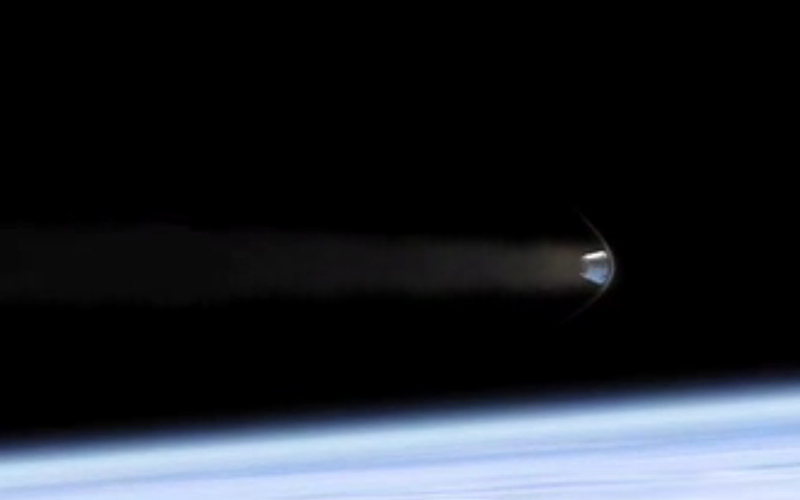Private Rocket Tests Engines for Dec. 7 Launch of Commercial Space Capsule

This article was updated at 2:41 p.m. ET.
The private spaceflight company SpaceX today test fired therocket engines slated to carry the firm's new space capsule on its first flightnext week.
The demonstration, known in rocket parlance as a static firetest, was meant to last for two seconds, but was aborted early due to too-highchamber pressure in one of the Falcon 9's rocket engines, Spaceflight Nowreported. SpaceX may try again to reach full thrust in a second attempttoday.
The test is a vital check for the Falcon 9 rocket before itsplanned Dec. 7 launch from the Cape Canaveral Air Force Station in Floridacarrying SpaceX's first Dragon space capsule.
The Falcon 9 rocket, the second built by the Hawthorne,Calif.-based SpaceX (SpaceExploration Technologies), began to fire its cluster of nine Merlin enginesat about 1 p.m. EST (1800 GMT) while securely anchored in place by groundrestraints at the seaside Space Launch Complex 40 in Cape Canaveral, Fla. Thetest firing initially appeared to go as planned, despite being delayed from anearlier 9 a.m. ET (1400 GMT) target. [Photosfrom first Falcon 9 rocket launch]
Today's test is part of a full dress rehearsal for theFalcon 9's planned Dec. 7 liftoff. That launch will be the first voyage of thecompany's Dragonspaceship, designed to carry cargo, and possibly eventually crew, intolow-Earth orbit.
SpaceX has a $1.6 billion contract with NASA to provideDragon spacecraft for cargo flights to the International Space Station afterthe U.S. space agency's shuttle fleet retire. The company also hopes to win acontract to ferry astronauts to the station as well ? though Dragon is not yetman-rated to carry people to space.
Get the Space.com Newsletter
Breaking space news, the latest updates on rocket launches, skywatching events and more!
During next week's test launch, the Falcon 9 is slated tocarry the Dragon capsule to low-Earth orbit at speeds greater than 17,000 mph(27,300 kph). The Dragon capsule will separate from the rocket's second stageand make multiple orbits of Earth, demonstrating its operationalcommunications, navigation and maneuvering abilities, before re-enteringEarth's atmosphere and landing in the Pacific Ocean a few hourslater.
The entire spaceflight is expected to last about four hours,SpaceX officials have said.
Ground crews plan to retrieve the capsule from the water inthe first attempt by a commercial company to recover a spacecraft re-enteringfrom low-Earth orbit.
The flight will also be the first mission by any companyunder NASA's Commercial Orbital Transportation Services (COTS) program,designed to spur development of private vehicles capable of carrying crew andcargo to the International Space Station. SpaceX plans to fly at least 12unmanned missions to deliver supplies to the space station with Dragon and theFalcon 9.
- Top 10 Fantasy Spaceships Becoming Reality
- Photos: SpaceX's Dragon Space Capsule
- SpaceX Receives FAA License to Return Private Spaceships From Earth Orbit
Join our Space Forums to keep talking space on the latest missions, night sky and more! And if you have a news tip, correction or comment, let us know at: community@space.com.

Clara Moskowitz is a science and space writer who joined the Space.com team in 2008 and served as Assistant Managing Editor from 2011 to 2013. Clara has a bachelor's degree in astronomy and physics from Wesleyan University, and a graduate certificate in science writing from the University of California, Santa Cruz. She covers everything from astronomy to human spaceflight and once aced a NASTAR suborbital spaceflight training program for space missions. Clara is currently Associate Editor of Scientific American. To see her latest project is, follow Clara on Twitter.









